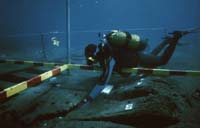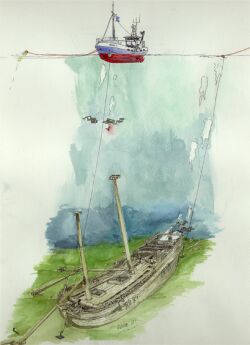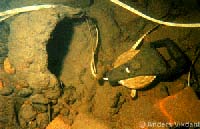What is Underwater Archaeology?In underwater or maritime archaeology we learn about the past from maritime finds, usually shipwrecks, but also dwellings and ports. Along coastlines worldwide, many thousands of ships have perished. They are laying there as links to the past.
For example, the cold waters in the Baltic Sea in Northern Europe have a unique collection of well preserved wrecks from times past, and most of them have not been located – yet. Some examples of Nordic underwater archaeology are the Vasa, the Kronan, and the East Indiaman Götheborg excavations. These ships are impressive, but they are only parts of a maritime cultural landscape. In this cultural landscape we also include old harbours, anchorages, coastal inns, barrages built of poles, and coastal settlements. On dry land as well as under water. Thus, underwater or maritime archaeology does not necessarily deal with wrecks, even if that is the part scuba divers more often deal with.
In Sweden, the Swedish Underwater Federation aims, together with the Swedish Underwater Archaeology Society, at preserving and informing about the maritime cultural landscape. Most countries of the world have similar federations, societies and authorities. Excavations should not be attempted single-handedly. Such projects require training, equipment, and official permit. In Sweden and Finland, all submerged wrecks older than 100 years are legally protected, and may not be touched. Younger wrecks usually have an owner, who must give permission before anything is touched. This legislation differs from country to country.
A common cause for a wreck's
decay is the natural degradation. In the Atlantic, and other salt seas, wooden wrecks are If you are a scuba diver, your help is needed to preserve this
heritage. Then you too may experience the feeling of
floating weightlessly above a wreck, perhaps one that's not previously discovered. Related texts |



 Back to Nordic Underwater Archaeology
Back to Nordic Underwater Archaeology